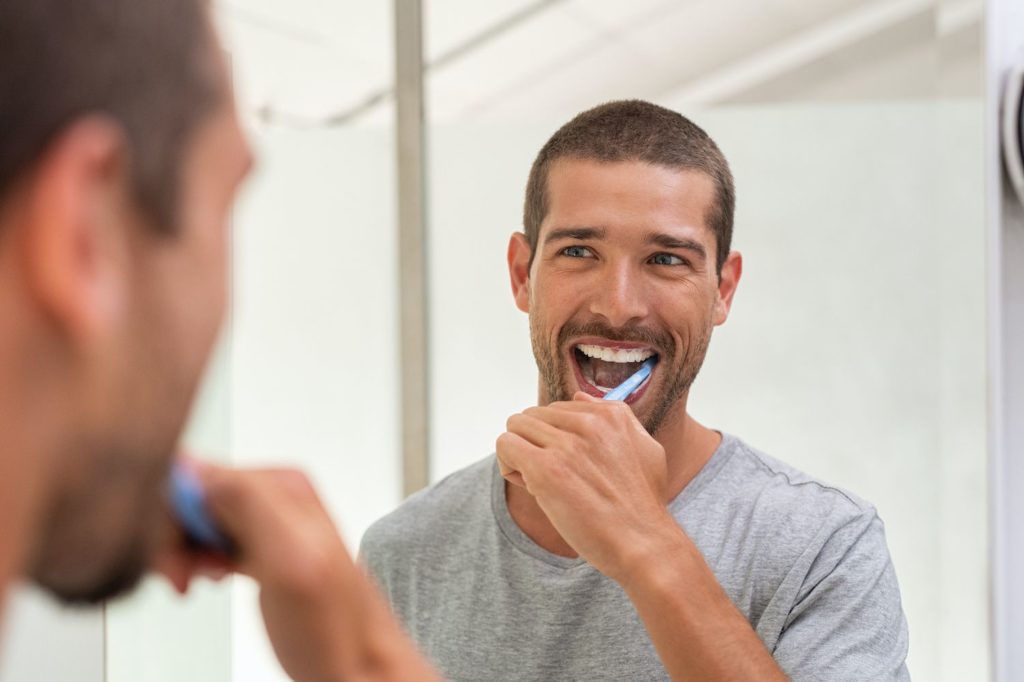You know that good oral hygiene involves proper tools: floss, toothpaste, and a toothbrush. When you run out of floss and toothpaste, you purchase new supplies. But did you know that you need to buy a new toothbrush every so often too?
A toothbrush will withstand the pressure of scrubbing against your teeth, but it cannot function effectively forever. To ensure you maintain appropriate preventative dental care you will need to buy a new toothbrush on a regular basis. Read on to learn why dentists ask their patients to routinely replace their toothbrushes.

What Happens to Your Toothbrush Over Time?
The firm bristles of a toothbrush are designed to scrub plaque, tartar, and surface stains from your teeth. Though durable, the bristles will wear down and fray over time, which will render them less effective at cleaning your teeth.
Toothbrushes will also collect germs and bacteria from both your mouth and the surrounding area where you store them. Though you rinse your brush before and after your oral hygiene routine, this exposure will still leave your toothbrush vulnerable, and it will inevitably deteriorate as the weeks pass.
Storing it in a closed container will breed bacteria and mold, worsening the problem. You will therefore need to prepare to buy a new toothbrush after a few months of usage.
How Often Should You Buy a New Toothbrush?
Dentists usually recommend that you purchase a new manual or traditional toothbrush every three or four months. During this time, the bristles will wear down and become less able to clean your smile the way that you need.
If you see the bristles fraying before this time, you should replace the toothbrush sooner. An electric toothbrush has shorter bristles and will likely need more frequent replacements of its head. Usually, you will need a new electric toothbrush head every 12 weeks or so.
Sometimes, you will need to replace a toothbrush due to situational reasons. For instance, if you or someone you live with contracted a contagious illness, you may want to throw out the toothbrushes in the house to lower the risk of spreading the disease. You should also toss the toothbrush and get a new one if you know that someone else has used it.
What Happens If You Use an Old Toothbrush?
If you use a toothbrush for longer than four months, you might not be removing enough plaque and tartar from your smile. If these residues linger, they can eat away at your tooth enamel, putting you at risk of cavities and other dental threats. While a dentist can treat a cavity with a dental filling, you should preserve the natural structure of your smile as much as possible.
When you cannot properly clean your teeth, the appearance of your smile may also suffer. You might notice stains forming on your teeth or their color might dull or grow yellow. Ensure your smile looks and feels its best by using appropriate tools for oral hygiene.
